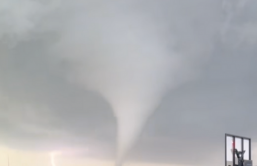NASA has released a set of new images of the ill fated ESA's Exomars Schiaparelli lander and the mars probe lying in its final resting place, the martian surface.
The detailed image released by NASA shows the lander lying on the martian surface, surrounding it, a dark crater caused by the impact. The Nature World News quotes space.com and says the crater is 1.6 feet deep and nearly 8 feet wide. NASA's mars orbiter reportedly captured these images, according to Nature World News.
Extreme Tech quotes the European Space Agency in a statement, "The central feature of the images was a dark fuzzy patch of roughly 15 x 40 m, associated with the impact created by the crash of the Lander. The images show a dark spot in the centre, which is consistent with the crater made by a 300 kg object impacting at a few hundred km/h.
An uncalculated error reportedly spelled the end for the European Space Agency's Schiaparelli lander as things went south when the lander opened its parachute before the time it was supposed to deploy it.
This resulted to the lander's thruster not being able to fire long enough for a safe landing; leading to its unfortunate crash on october 19, the Nature world news reported. The ESA had initially planned for a soft landing.
All communication with the capsule was reportedly lost during the final minute while the Schiaparelli was hurtling at the speed of about 300 kph before crashing into the ground.
In addition, the lander disengaged from the ExoMars Trace Gas Orbiter on October 16, and started its descent on October 19.
Also, reports further revealed that the findings point to a software issue with the lander rather than any hardware breakdown. The spacecraft seems to be unsure about its own location, hence the premature opening of its parachute, then promptly fired its landing rockets and turned on its instruments for monitoring ground situations before it crashed. It is claimed that the lander was much closer to the ground that it had figured,
The captured photo shows the descent of the Schiaparelli lander in real time, brought out by the ESA. See it here.








